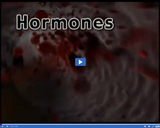
Hormones are chemicals carried in the blood responsible for triggering a wide variety of changes in different parts of the body.
- Subject:
- Science
- Provider:
- Utah Education Network
- Author:
- Visual Learning Company
- Date Added:
- 02/28/2010

Hormones are chemicals carried in the blood responsible for triggering a wide variety of changes in different parts of the body.

A nerve cell, also called a neuron, is the primary cellular building block in the nervous system.
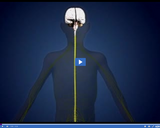
There are two main sections of the nervous system - the central nervous system and the peripheral nervous system - which work together.
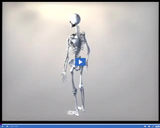
The peripheral nervous system contains nerves that form a network throughout the body that directs voluntary and involuntary activities. The spinal cord connects the brain to nerves throughout the body.
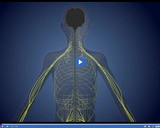
The peripheral nervous system consists of all the body's nerves located outside of the spinal cord and brain.
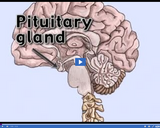
Located at the base of the brain, the pituitary gland regulates other glands in the body and is sometimes referred to as the master gland.

The skull protects the brain.
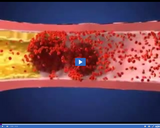
A stroke is caused by a lack of blood flowing to a portion of the brain, causing brain tissue to become damaged. A stroke can cause paralysis and/or brain damage.
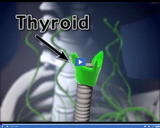
If the thyroid gland produces too little or too much hormone, a wide variety of problems can occur.

The breast bone and ribs protect the lungs and heart.
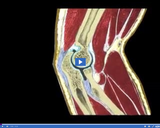
Cartilage is found at the end of bones and joints. It enables the ends of bones to move smoothly against each other.
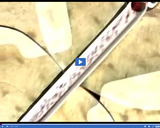
Bones are living tissue made of cells. Cells in bones use energy and oxygen for growth and repair.
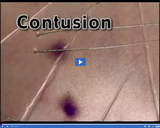
A contusion, also referred to as a bruise, occurs when muscle tissue is injured and blood vessels are broken, causing a discoloration under the skin.
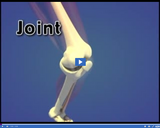
A joint is the place where two bones come together. The knee is an example of a hinge joint.
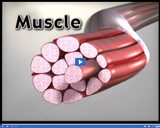
Muscle fibers contract and relax to cause movement.
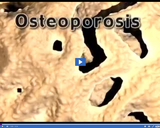
Osteoporosis is a disease in which the bone density decreases, causing bones to be weak and more prone to fracture.

Some bones produce red blood cells.
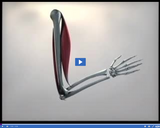
This moving arm depicts skeletal muscle, or voluntary muscles, which move when we want them to move. Skeletal muscles usually work in pairs, meaning that when one contracts the other relaxes.
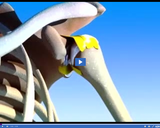
Sprains occur when ligaments at a joint are stressed or torn.
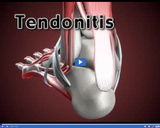
Tendonitis is an inflammation of the tendon.